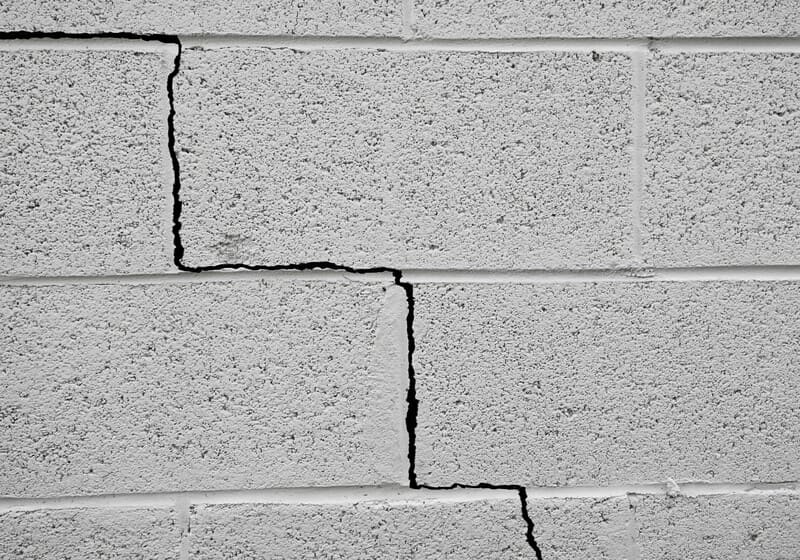Foundation issues can easily be one of the most expensive things you’ll deal with as a homeowner. The thing is, most of the time it’s kind of hard to tell what a real foundation problem is and what isn’t. Since literally everything rests on your foundation, you can see subtle signs that might spell foundation trouble all over your house—you just have to know where to look.
Before We Begin
It’s important to note that the following warning signs of foundation problems don’t necessarily mean you have one. The truth is that all houses settle over time—there’s no way around it, and a little bit of settling is to be expected. However, if you’re noticing many of these occurring at once, it’s a good idea to bring in a professional to get their opinion.
Also, keep in mind that the age of your home isn’t the only factor involved with foundation issues. Depending on the condition of the soil, the climate and more, even new houses can exhibit the problems below.
1. Doors and Windows are Tough to Close
A substantial shift in your foundation often causes doors and windows throughout the home to misalign. Windows might be difficult or impossible to open, while you’ll find that doors won’t latch easily and might catch on the frame and jamb.
2. Sagging Floors or Ceilings
Sagging floors or ceilings can indicate a number of problems: excessive settlement, termite infestation, or improperly spaced or altered floor joists. Sagging floors will generally be easy to recognize—you might notice some separation between your floorboards and baseboards, and you may even be able to feel the slope of a floor when standing on it.
3. Your Chimney’s On the Move
If your chimney’s starting to look like the Leaning Tower of Pisa, don’t ignore the issue. This can be a sign that the soil beneath your home has eroded and isn’t able to support it. Even if it’s not noticeably tilting, though, looks for signs of movement like cracked mortar or an uneven hearth that can signal the beginning of larger problems to come.
4. A New Mold Problem
You haven’t had mold problems in the past, but now it seems like new spots are popping up everywhere, including the basement. Before you blame the humidity, take a look at the state of your walls. Are there any cracks letting in moisture from outside? Cracks can be a normal part of house settling, but if they’re letting the elements in, they need some attention, stat.
5. Cracks in the Walls
This bears repeating—just because you have cracks in your walls, doesn’t mean you need to panic. Small vertical cracks around windows or doors are most likely normal and due to seasonal expansion and contraction of drywall and the wooden structure underneath. Cracks that are more than one-eighth inch wide, are horizontal or diagonal, or show a telltale “stair step” pattern in masonry joints are more of a cause for concern. Call in the experts when you see these signs.
Call National Property Inspections Today
NPI inspectors are professionally trained to identify the condition of a home’s most important features, including the foundation. Find your local inspector today to schedule an inspection before you buy.



